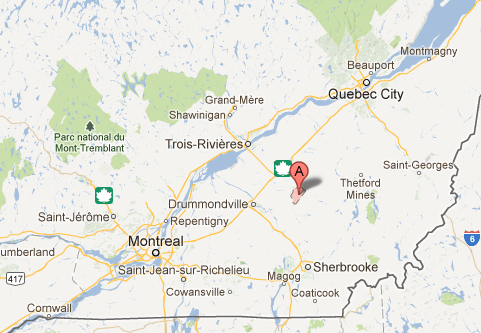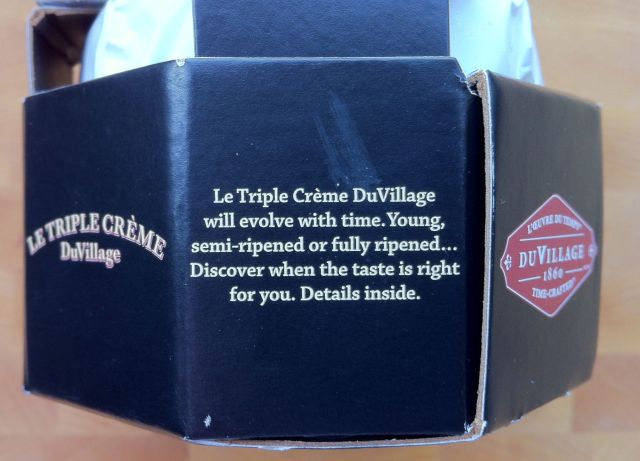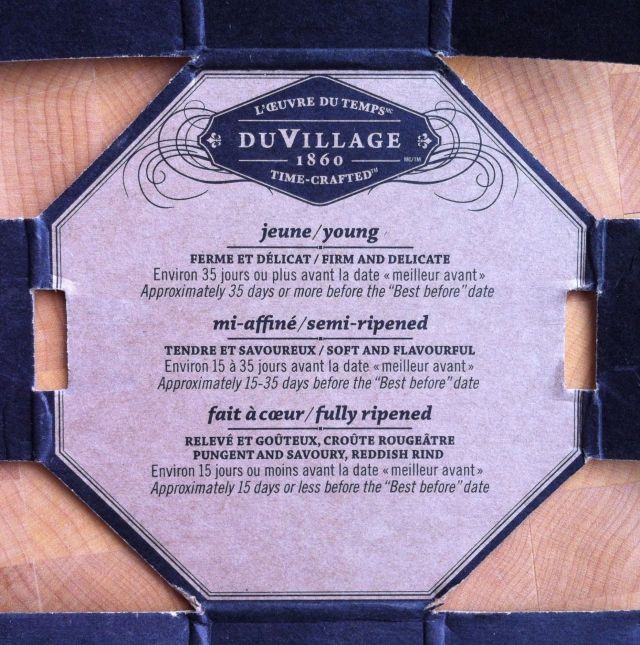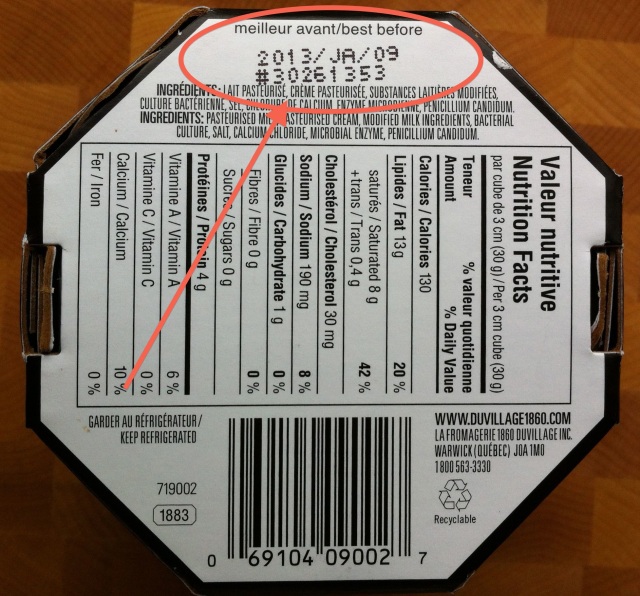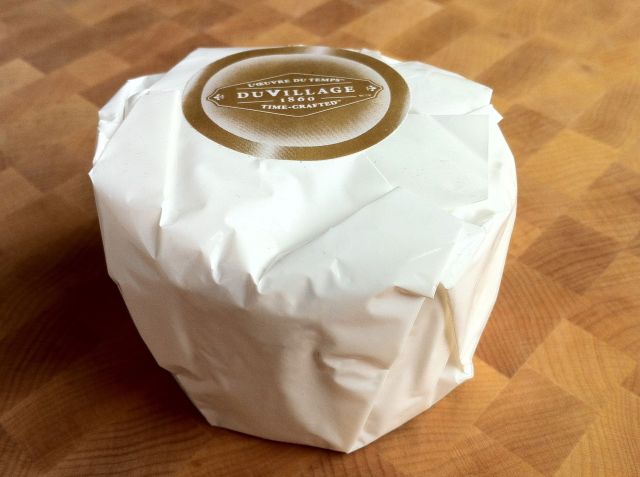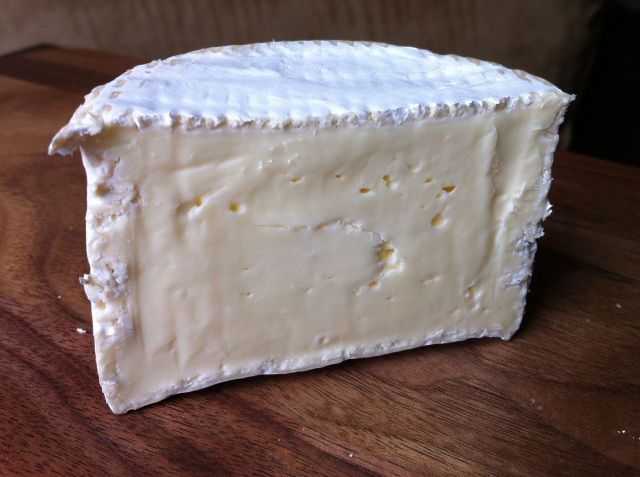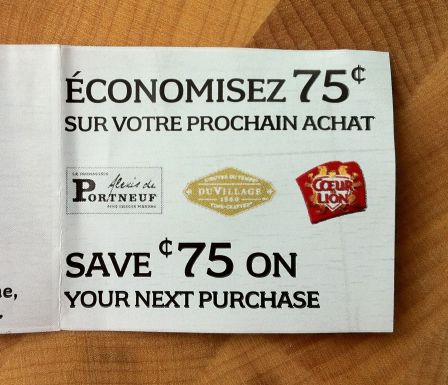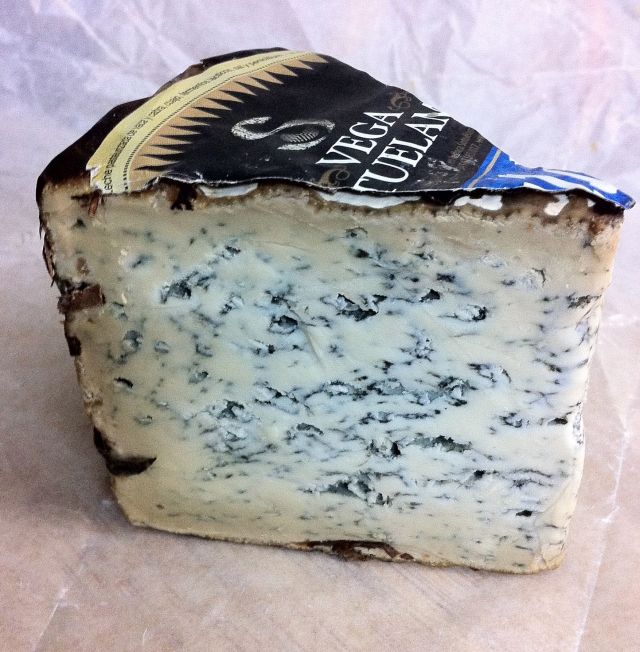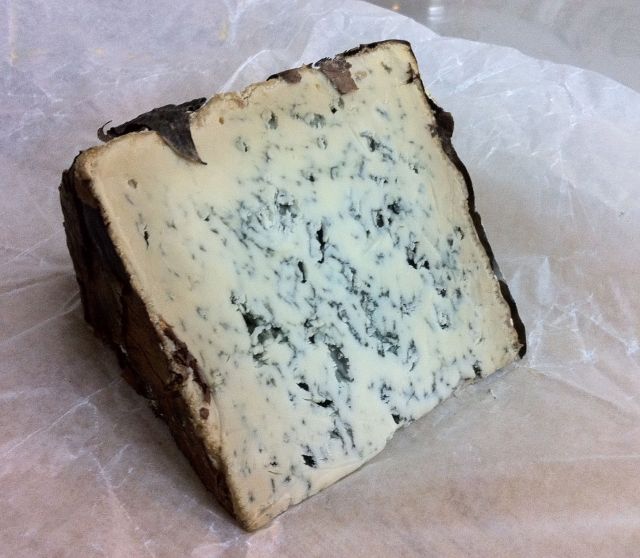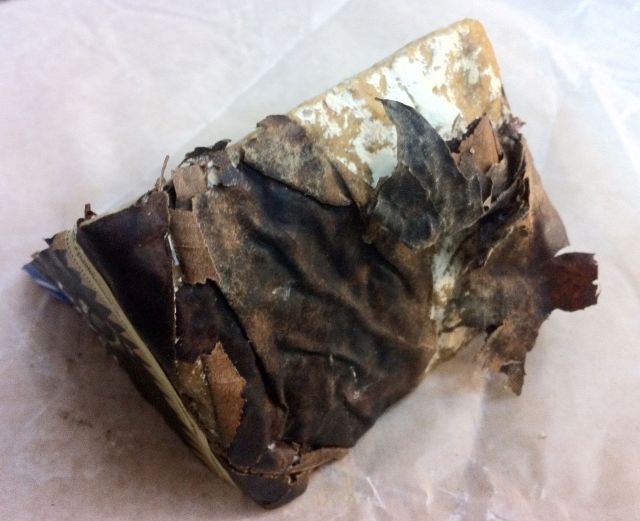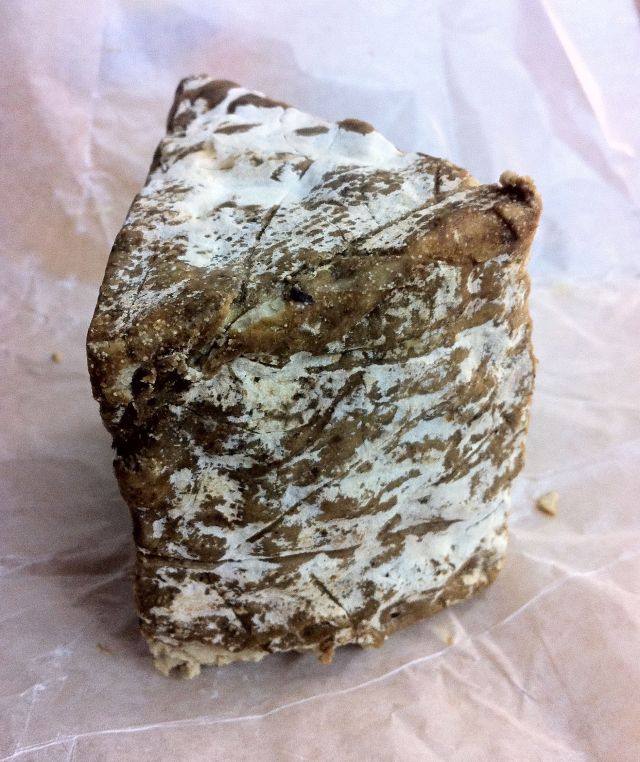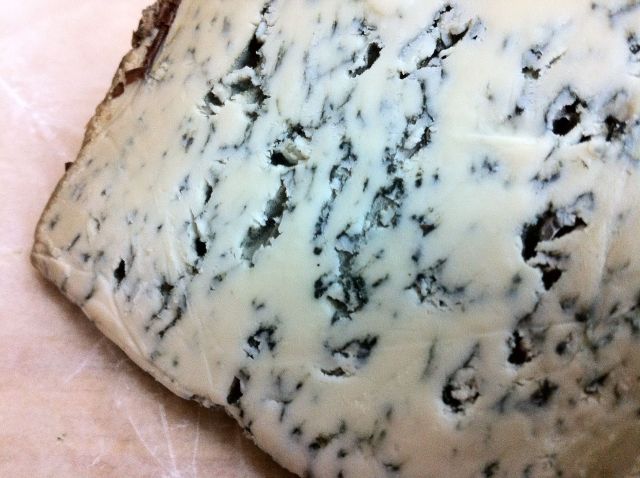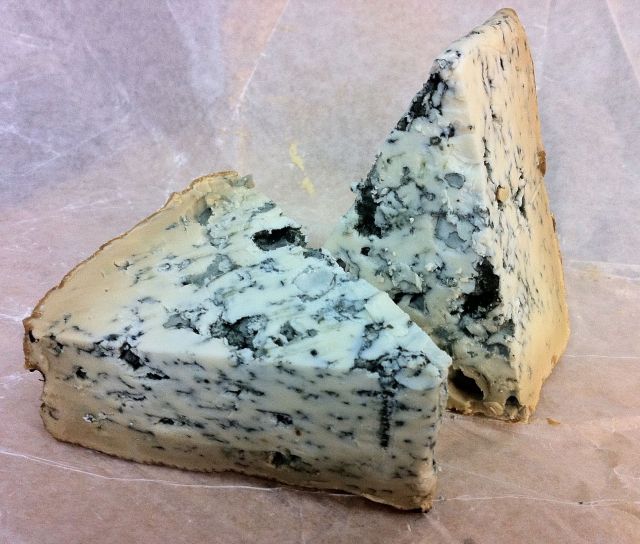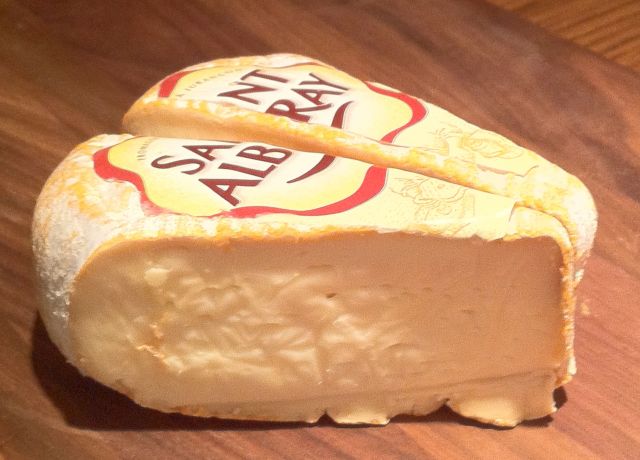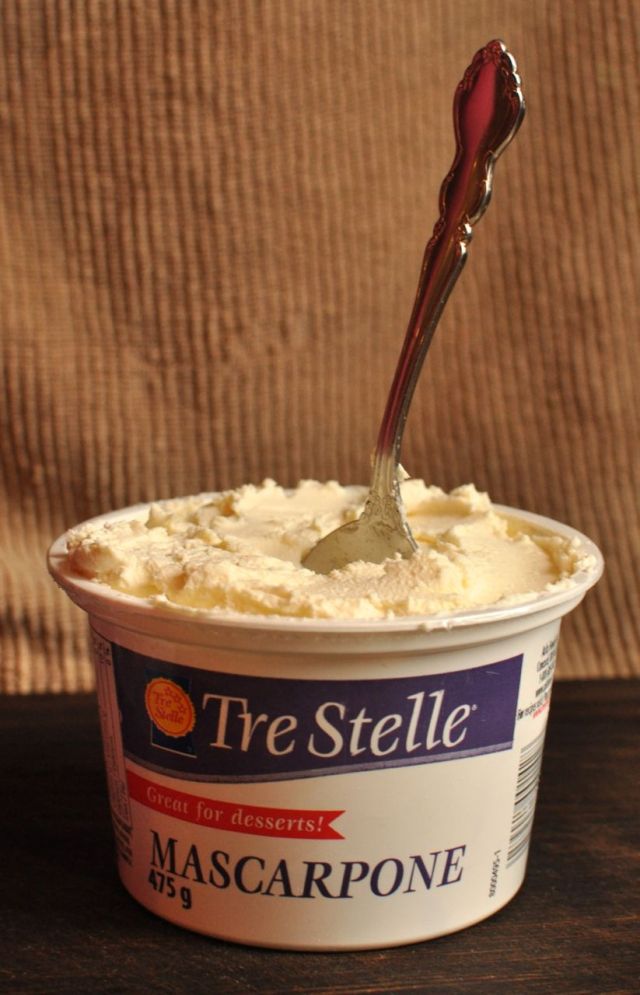DuVillage Le Triple Creme – Canada
I picked up DuVillage Le Triple Creme cheese at the St. Lawrence Market in Toronto. I was enticed to buy it as the price was marked down since the cheese was very near its “best before” date. I picked it up, pressed on the corner and smelled it. It wasn’t overly soft nor did it smell unpleasant. I surmised that it was not overly ripe and I bought it.
DuVillage Le Triple Cream is a cow’s milk cheese produced by DuVillage 1860 located in Warwick, Quebec, Canada. Warwick is located about half way between Montreal and Quebec City.
This cheese is well packaged. There is a lot of information on the box as well as inside. On the side of the package it is says “Discover when the taste is right for you. Details Inside”.
Now that is a great teaser. But while I was standing in the market holding the box I wanted the information that was hidden inside. Since I ended up buying the cheese I can save you the frustration. This is what it says inside.
This triple creme goes through three phases during it’s ripening.
- Young – 35 days or more before the “best before” date
- Semi-Ripened – 15 to 35 days before the “best before” date
- Fully Ripened – 0 to 15 days before the “best before” date
You get to decide which stage you prefer and buy the cheese dated accordingly. The “best before” date appears on the bottom of the box.
Unpacking this cheese involves a few steps.
The cardboard box protects the soft package inside.
Viola!
DuVillage Le Triple Creme is a surface ripened cheese. The rind is snowy white and covered with the penicillium mold that gives the cheese it’s character. Cutting the cheese in half reveals a buttery colored creamy white paste. The cheese that I had was fully ripened. It was shiny, soft and spreadable. If it had been younger then the paste likely would have been firmer, perhaps with a chalkier texture near the center.
What does DuVillage Le Triple Creme cheese taste like? It is a rich with a mild, buttery and creamy taste. The rind is edible and it is mild. The quality of this cheese is very good. It won first place in the Canadian Cheese Grand Prix in 2006 in the soft cheese category.
Were you wondering about that little 10,000 sticker on the outside of the package? That was a promotion for a contest with five prizes worth $10,000 each for a trip to the World’s Best Restaurant in Denmark. The coupon provided a web site address to enter: www.thewinningcheeses.ca. Unfortunately the contest was already closed to entry when I tried to sign up today.
There was also some information on other cheeses by DuVillage.
as well as a $0.75 off coupon for future cheese purchase.
That coupon will come in handy because I plan to buy some La Sauvagine after a sampling in a recent Cheese Appreciation class.
DuVillage has a good website at www.DuVillage1860.com. This cheese seems well distributed as I have seen it in several other local grocery stores.
I thought that DuVillage Le Triple Creme was very good! I recommend this cheese.

